To focus on retention or to leverage acquisition? That is the question. It’s hard to excel in both, but there are strategies that will help to kill two birds with one stone. One such strategy is customer onboarding. In this blog post, we’ll unveil its mechanics and perks, discover the “aha” moment of your product, and learn from some cool onboarding email examples. Off we go!
What does onboarding mean?
Customer onboarding is a lead nurturing scenario that helps people get familiar with an app, product, or service.
Remember the last time you downloaded a mobile app and launched it. Most mobile apps start with a welcome screen and show you around, educating you on the main features, setting up your account, and asking questions to get to know you better. On signing up, you also receive an email or an email series with useful guides and FAQs. All this process and the result of it is customer onboarding.
In this blog post, we’ll focus on online onboarding strategies, but onboarding can take place offline too. For example, when you arrive at a hotel and complete the check-in process.
Regardless, online or offline, people buy any product to help them fulfill their tasks or solve a problem. Customer onboarding provides them with valuable information and guidance to ensure they made the right choice and will eventually succeed.
In this sense, onboarding continues the dialogue with the customer after their purchase and shows how to get what has been promised.
 Onboarding as a part of a customer’s journey
Onboarding as a part of a customer’s journey
Depending on the device, there can be:
- mobile user onboarding flows which we see in mobile games, financial and fitness apps;
- desktop user onboarding flows that show you around web-based services such as planning and financial tools, CRM systems.
On-site and in-app onboarding flows are usually backed-up by an email onboarding series, working together to unlock all the value of the product and accelerate the user’s journey to success.
If you want to get into the nitty-gritty, here is a list of all the possible client onboarding components:
On-site or in-app onboarding flows
- Product tutorial
- Signup form
- Documentation, guides, and FAQs
- First login
- Checkup call
- Interface and push notifications
- Webchat welcome scenario
- Tooltips
- Customization
- Feature promotion
- Milestone recognition or awards
Onboarding email flow
- Registration email series
- Welcome email
- Educational or tutorial email series
- Milestone email related to using the product
- Feature promotion email
All of this looks quite a big job to do. Next, we’ll see why it’s well worth your effort.
Why do you need to onboard your customers?
Here are some recent stats on customer onboarding from Wyzowl:
- 8 in 10 users say they’ve deleted an app because they didn’t know how to use it;
- 55% of people say they’ve returned a product because they didn’t fully understand how to use it;
- 88% of people say they are more likely to stay loyal to a business that invests in onboarding content that welcomes and educates them.
Looking at these figures, it’s obvious that onboarding is quite influential for overall customer experience. If done right, it can become the low-hanging fruit of your marketing activities, incentivizing marketing efforts, and growing brand loyalty.
Customer onboarding helps you reduce churn and boost LTV
Businesses lose customers at all stages of the buying cycle. There are tons of reasons for losing customers, but if we look at the early stages, where the churn rate is highest, it turns out that people either don’t obtain any value from the product or simply don’t understand it.
This is demonstrated in the results of an experiment by Dan Wolchonok from HubSpot. He surveyed people who churned from their email tracking tool, which is now a part of HubSpot Sales. The main question was why they left the product within the first week, and here are the results.
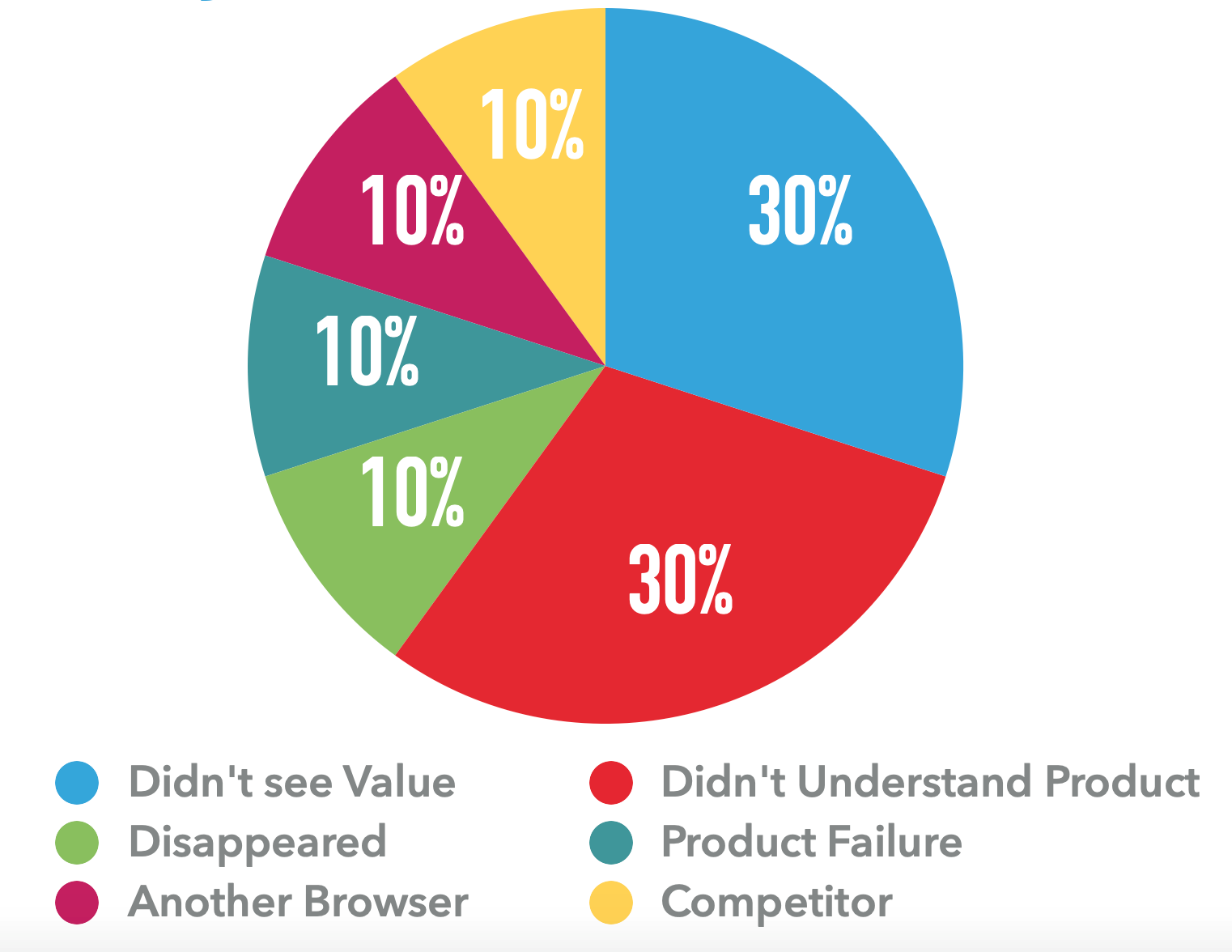 Reasons customers churn during week one
Reasons customers churn during week one
Here come the consequences:
- The higher your churn rate is, the lower the lifetime value of a customer: you get less revenue from each user you acquire.
- The less revenue you get from each user, the more users you will need to keep operational.
- The more users you need, the more you pay for customer acquisition.
Quality customer onboarding helps you unveil the value of a product and makes it simple to use. It will easily resolve the top 2 issues from the chart above and improve customer retention. Not bothering to develop effective customer onboarding is like burning money.
Customer onboarding helps you convert leads into customers
This point is crucial for services and apps with subscription models. They usually have a trial period through which a prospect makes a decision, so the onboarding starts even before the purchase itself and actually stimulates it.
 Onboarding as a part of a customer’s journey for a service with a free trial
Onboarding as a part of a customer’s journey for a service with a free trial
According to a ProfitWell Report based on 500 B2C and B2B app reviews, customer onboarding drives the willingness to pay. Customers who perceived onboarding positively, are less likely to churn in the first 21 days and are 20% more likely to make a purchase.
That’s why proper customer onboarding is not only about keeping customers who already bought your product, but also generating new paying clients and revenue.
Onboarding email best practices
Onboarding emails are an important part of the overall onboarding flow. If a new user skips your in-app or on-site onboarding tutorial, your email can become plan B.
You might say that email open rates are disappointing, so there is no space for high hopes. But the good news is: the average open rate of a welcome email is around 50% that makes it 86% more effective than standard email campaigns. So, onboarding emails can become the flagship of your email marketing campaigns.
As we mentioned above, an onboarding email flow is not limited to a single welcome email but is a series of nurturing emails that can grow into regular and engaging communication. Here are some best practices to keep in mind if you decide to craft an onboarding email campaign yourself.
Lead customers to their “aha” moment
How should you structure your onboarding email or email series? There are several approaches, which are valid for both on-site and in-app onboarding scenarios. You can:
- Explain the core benefits and how users can take advantage of them with your product.
- Take customers on a tour through the first or most common usage scenarios.
- Walk them through profile creation or account setup.
- Showcase key features and how to use them.
This is an example of the third scenario from Plex, a streaming platform. Instead of saying all the “thank you for signing up” stuff, they get down to business and offer the next step in setting up a new user’s account.
 A welcome email with a progress bar from Plex
A welcome email with a progress bar from Plex
All four above mentioned tactics can be used separately or simultaneously, but you should make sure that your customer realizes the value of your product as soon as possible.
The moment it happens is called the “aha” moment and it was described by Facebook VP of Growth Alex Schultz. After your customers have their “aha” moment, they are more likely to stick around, convert into paying customers, or upgrade their subscription.
For Facebook and LinkedIn, it was the point when users got X connections within Y days because only at that stage, they unlocked all the joy of staying in touch. For Slack, it was a certain amount of messages sent between team members, because only then they uncovered the full potential of the messenger.
Identify your “aha” moment, analyzing your most active users’ behavior, and build onboarding email series around them. For Facebook and LinkedIn, it could be a tutorial on how to add friends; for Slack, a guide into collaboration in group chats.
This is how Remote pushes its “aha” moment, suggesting ways to add connections.
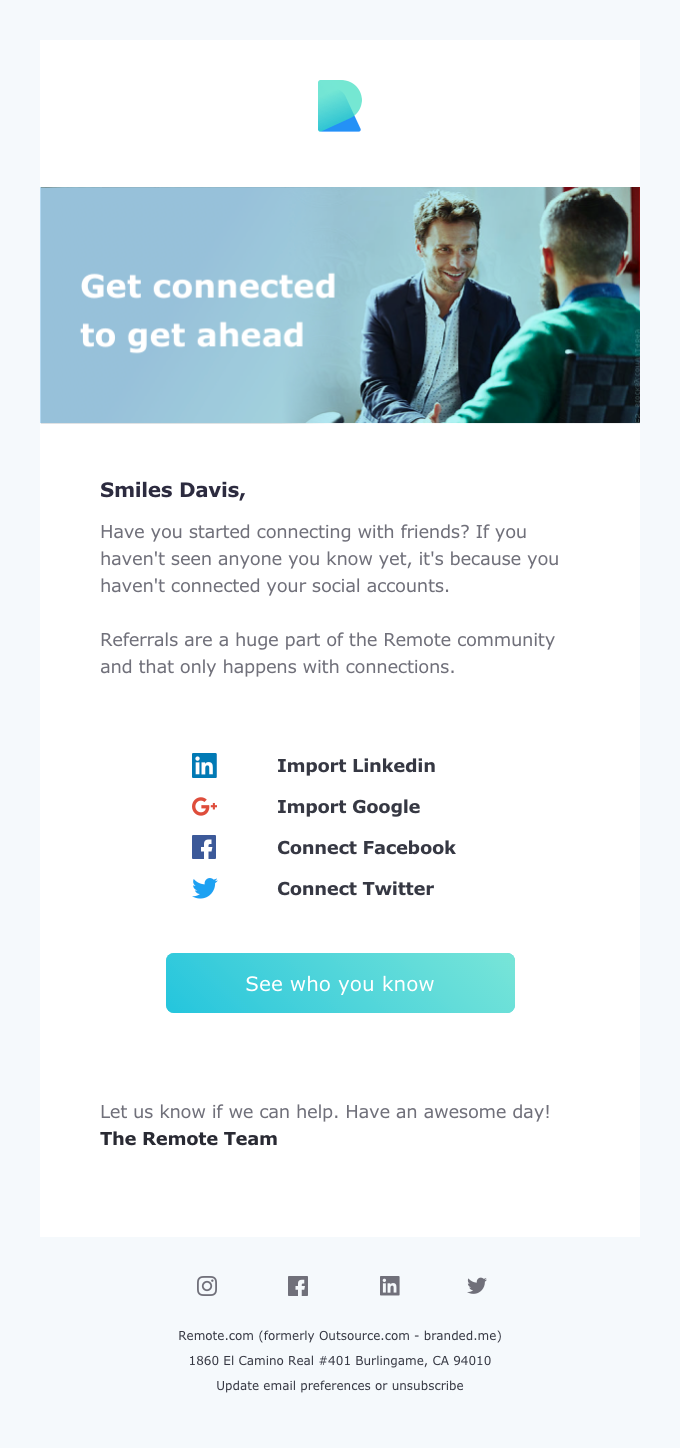 An onboarding email from Remote; source: Really Good Emails
An onboarding email from Remote; source: Really Good Emails
The aha moment with Spotify happens when you unlock the power of their recommendation system and personalized playlists. To lead you there, the app will send you emails with the latest releases of artists you like and personalized playlists.
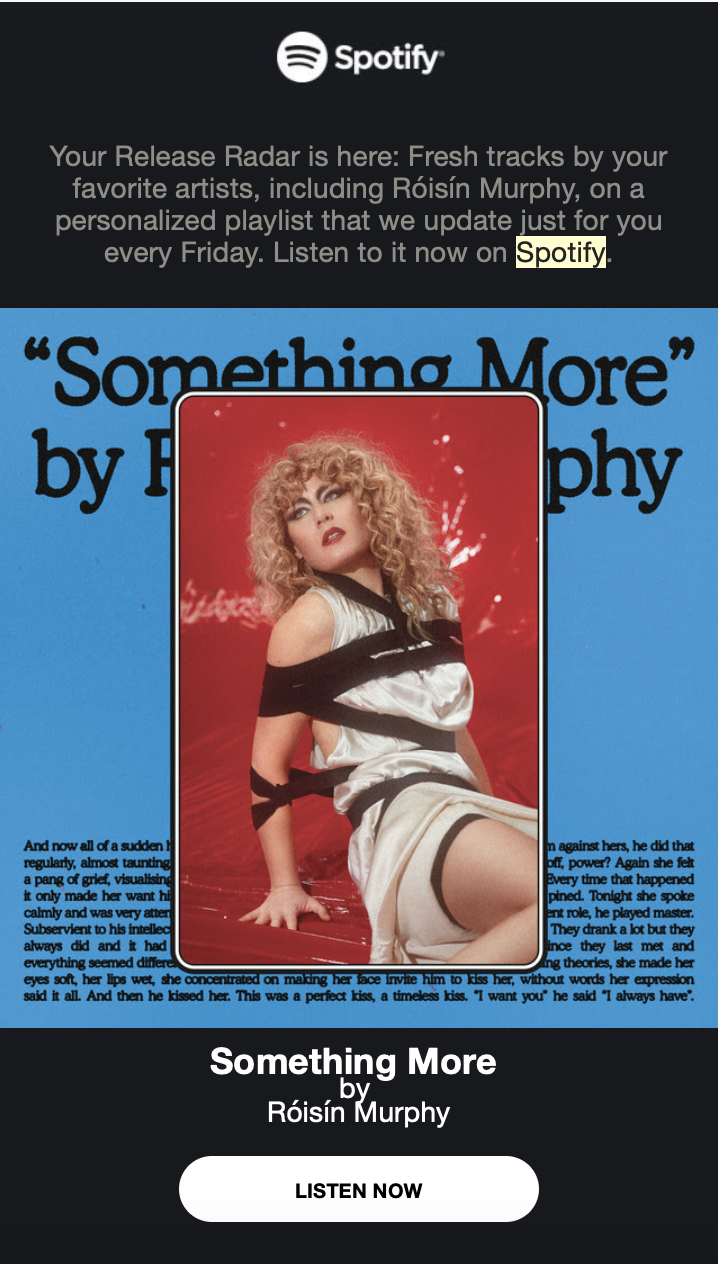 A Release Radar email from Spotify
A Release Radar email from Spotify
In the case of Spotify, this is a recurring email communication, which contributes to onboarding and carries on by engaging customers throughout their use of the platform.
Automate and test
If you want your customers to take specific actions while being onboarded, you should know what they actually do inside your product. Track customer interactions and trigger emails accordingly, sending them “the next step” emails at the right time.
This is how Figma, a workspace for designers, onboards users from its competitor.
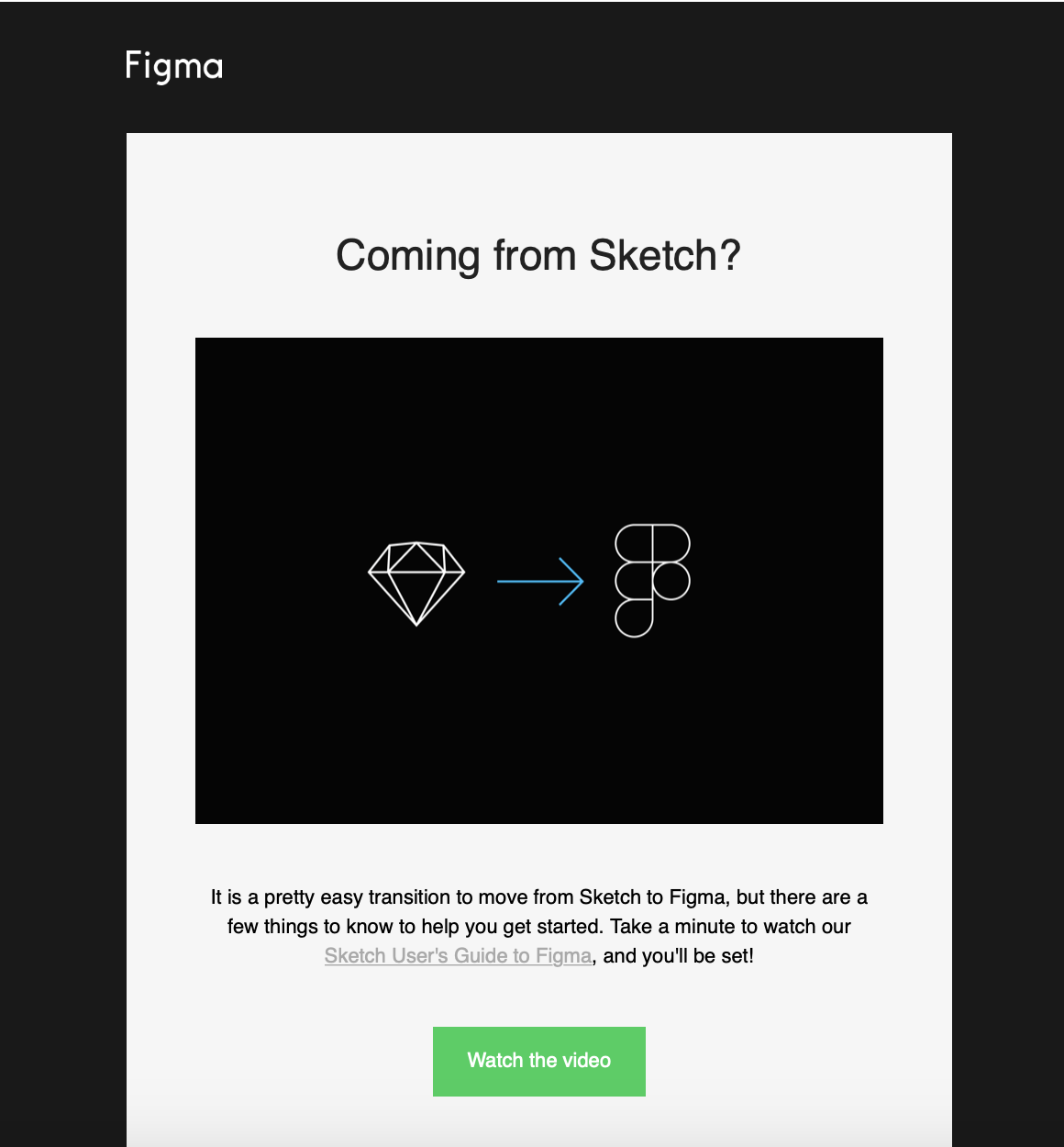 An example of a triggered onboarding email from Figma
An example of a triggered onboarding email from Figma
This email from Figma is powerful because it’s extremely relevant and focused:
- the image is explicit and supports the message;
- the copy is concise and points at the product’s value — the simplicity of coming from Sketch;
- there is only one call to action, which is hard to miss.
Automated emails are easy to test and evaluate. You can track conversion and other marketing metrics and link them to a set of metrics that describe user interaction with the product. This can be done with Google Analytics or end-to-end analytics services.
For more complicated tasks, you’ll need programming: partial, to integrate Google Analytics with business intelligence services like Tableau, or do it from scratch on Python or R.
Personalize and celebrate milestones
Even when your customers have already had their “aha” moment, it doesn’t really mean they have fully adopted the habit of solving their problem with your product. This is a bitter truth, especially when it comes to products related to fitness, financial planning, or other high-effort activities.
Triggered onboarding emails, celebrating milestones and cheering a customer up can help you out. One of the best examples of such email campaigns is by Headspace. They created a basic free 10-day beginners course and backed it up with a series of milestone emails on day 1, day 2, day 3, day 5, day 7, and day 9.
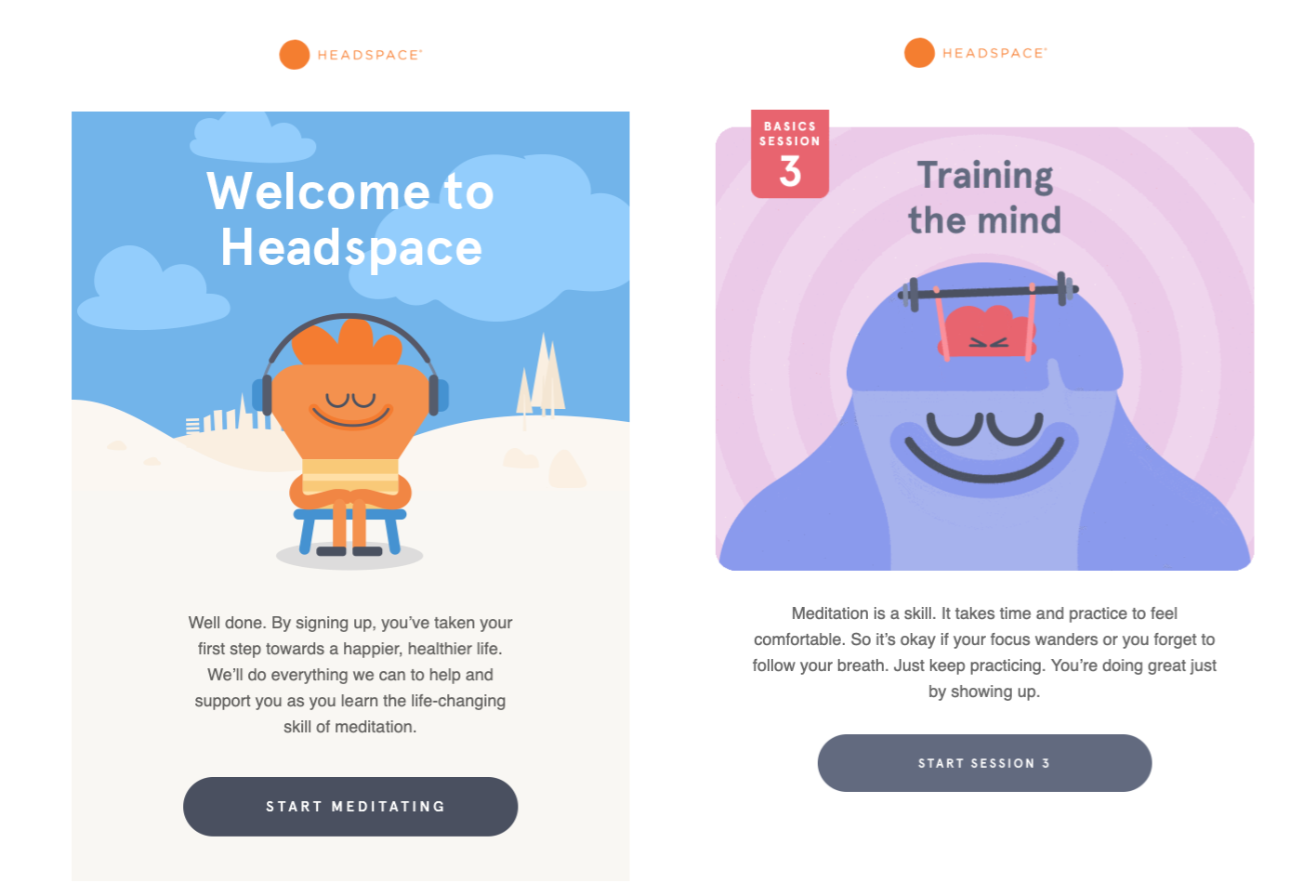 Headspace day 1 and day 3 onboarding emails
Headspace day 1 and day 3 onboarding emails
This strategy is absolutely genius: through this email series, Headspace encourages its users to stick to meditation. But what customers actually develop is the habit to meditate with Headspace.
Other points of success of this onboarding email campaign:
- really nice GIF visuals that make you smile and calm down;
- a friendly tone of voice as if you were talking to your personal guru;
- a single and bold call to action.
Summing up customer onboarding
Customer onboarding is important for any business struggling to reach retention and conversion rate goals. When done properly, it maximizes marketing efforts and builds long-lasting customer relationships.
Usually, it includes on-site or in-app tutorials and tips, backed up by onboarding email campaigns. Here are some tricks to craft your own best-in-class onboarding email campaign:
- Identify the “aha” moment of your onboarding or the point where your customer unlocks the value of the product.
- Automate email flows triggered by user behaviors and guide users toward the “aha” moment.
- Help your customers build a habit of solving their problem with your product using milestone onboarding emails.
Sign up with SendPulse and create automated email flows to onboard your customers on the fly!